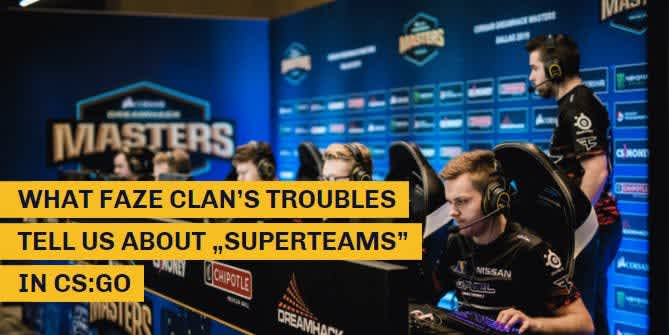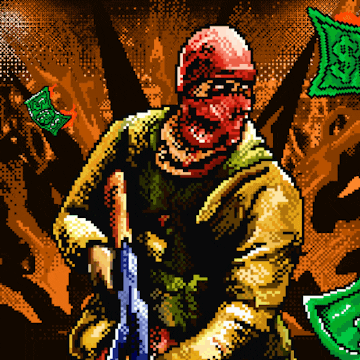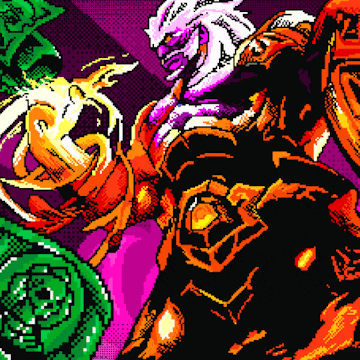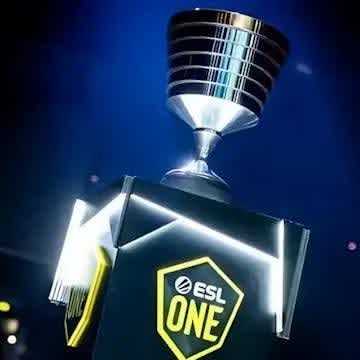The path of FalleN: from making Brazil to Made in Brazil
Despite MiBR's recent difficulties, there's no denying that the lineups crafted by Gabriel "FalleN" Toledo are a cornerstone of CS:GO's history. Perhaps the most interesting and unique aspect of his story is how his meteoric rise involved so many different organizations over the years. Unlike the perceived stability of a NiP, a Fnatic or an Astralis, their journey from KaBuM! eSports to MiBR truly made those world-conquering sides FalleN's teamsand no one else's.
Humble beginnings
Perhaps it would be a bit excessive to go back twenty-eight years, but that’s how far we would have to go if we wanted to begin our story from the birth of Gabriel Toledo de Alcântara Sguario. Even charting his full Counter-Strike career requires a thirteen-year leap into the past, starting with a three-and-a-half-year stint as part of “crashers” back in 1.6, a lineup that only brought limited success despite the already prodigal nature of FalleN as an AWPer.
Still, it was inspiring enough for him to turn professional in 2009 – winning one of his first matches in the Firegamers team against that particular incarnation of MiBR – and to found his own organization two years after that. Games Academy turned out to be a cornerstone of the local esports scene, starting out with CS:GO lessons from FalleN and morphing into an assembly line of Brazilian talent later on. As for his own career, a much more promising project followed soon thereafter, one that would feature a group of players that were widely considered to be the superstars in the Brazilian scene under the playArt banner. The team – already featuring fnx alongside him – only really found local success as the 1.6 era was winding down and some of his teammates were also reaching the end of their careers. It would mark a period of uncertainty for him, departing from the side in 2013 and considering a wide variety of other options ranging from Source to Crossfire or – gasp! – going to college.
A new star on the horizon
It took until 2014 for the international community to take note of FalleN, who had quite a lot of CS:GO experience already, his transformation from pure AWPer to IGL complete by that time. The lineup of fnx, fer, HEN1 and LUCAS would mark the first time he made a real impact on the international scene as KaBuM! eSports, making it to the ESL One Katowice after beating Team Dignitas 16-3 in the decider match. However, the organization was in such a poor financial state that even their qualifier appearance had to be crowdfunded, which mean that the team would play under FalleN’s own Game Acadeny banner for a short time until KeyD Stars – a Brazilian org backed by Vivo – picked up the squad, providing them with a gaming house and a move to the United States.
Sign up with Rivalry - your first bet is on us!The team’s first major appearance was already marked by the acquisition of Legend status after they qualified from a group featuring NiP, CLG and HellRaisers. While their journey was cut short by Virtus.pro in the quarter-finals in relatively straightforward fashion, they made quite the impression as a promising roster from an emerging region. A few local minor wins and a title at the iBUYPOWER Invitational followed, and it was quickly becoming clear that the team had outgrown the Brazilian organization. Luminosity would be their next home – and Keys Stars would eventually disband at the end of 2017.
Luminous lights
Apart from the financial support, perhaps the most decisive element in the swap was the absolute authority that was granted to FalleN regarding the lineup. zqk stepped down around the same time they made the org change – his replacement was a promising little fella called coldzera. You may have heard of him. A few months later, steel and boltz were cut loose and ruthlessly replaced with TACO and fnx instead, forming the core of the side that would soon dominate the game. Many deep runs and impressive performances would follow, most of which were ended by the Fnatic titans, often in the finals in some very memorable series.
The Swedes would soon falter though after olofmeister’s wrist injury, never to recover their dominance. FalleN would step in their place with their historic win at Columbus, followed by other titles at Dreamhack Open Austin and ESL Pro League Season 3, plus a second place at the ECS Season 1 finals. While their ascendance was initially questioned due to the diminished presence of Fnatic, it soon became clear that no one would be able to match the white-hot Counter-Strike they regularly dished out. Luminosity struck gold, but they weren’t a viable long-term fit for a team on the very top of the CS:GO world: a contentious transfer to SK Gaming followed soon thereafter.
Read more: Is pronax an underrated genius?
The German organization would offer a carté blanche choice over their living conditions plus $9000 in monthly allowances. The situation was a mess: SK had signed contracts on the one side, Luminosity had letters of intent for a two-year term. The players iniitally backed down from their planned move, stating that they “signed out of pressure and a promise of protection from Luminosity”. To complicate matters further, SK was initially represented by Pietro Fringuelli, who was then forced out due to a blatant conflict of interest stemming from his interim league commissioner role at WESA. It was ugly, lawyerly and a bit of a mess: eventually, the two orgs settled and the move was made official, but it cost the team its spot in the inaugural ELEAGUE event’s playoffs.
As it turns out, lightning doesn’t strike twice: Luminosity would remain in the scene, but their later lineups couldn’t hold a candle to the ex-Keyd Stars roster they picked up in the middle of 2015. Interestingly enough, their current team almost exclusively consists of FalleN’s ex-teammates with steel, HEN1 and LUCAS forming the core of the side after their recent move.

The SK era
Of course, the win at ESL One Cologne 2016 was a watershed moment, making FalleN’s team the second to win back-to-back majors, even if under a different banner than their previous one. However, the really impressive results came in 2017: they ended the year with two semi-final eliminations at the hands of Astralis in December and started the new one with another stumble before the final step at ELEAGUE Atalanta against Virtus.pro. These events seemed to mark a turning point: they would win the next five out six big events they would attend, an excellent streak marred by their quarter-final elimination in the next major. Still, they would post three other major wins in the latter months of the year – each netting a six-figure sum –, including a fantastic final at EPICENTER 2017 where they became worthy co-stars for the last hurrah of the VP lineup.
They took down both of the last two large events of the year: no one could have predicted the massive downturn in form that was to come.
Ever so immortalized
Who would have thought that a semi-final finish at the Boston major would be the high point of the team’s year to date? The twilight period of FalleN’s time at SK is marred by a roster change gone wrong, massive internal turmoil and a problematic relationship with the organization. The jury is still out on whether TACO was the true facilitator of coldzera, but it’s evident that the inclusion of Stewie2K and the subsequent change to English comms proved to be a disaster. Their best result from then on was a top 4 finish on home soil in an eight-team field, going up against a mousesports and a Faze Clan that were both marred by stand-in issues. They would lose to the former in straightforward fashion, their final event under the SK banner.
Their blockbuster move to the Immortals org was perhaps the worst-kept secret in the scene for a while, but it was still quite shocking to see how far their relationship with SK would deterioriate by the end, supposedly to the point that they wouldn’t even provide them with training facilities. The players, perhaps understandably, refusing to wear their SK jerseys at certain events.
The MiBR swap did not turn out to be the jolt of energy they need to turn things back around – but at least it restored a sense of normalcy. That being said, the roster moves executed (and planned, if the s1mple-related rumors are to be believed) in the early MiBR days did not at all feel like one of FalleN's trademark shuffles. The addition of Stewie2K and tarik only made sense based on their unexpected major win, and the clear loss in team cohesion was never made up by the supposed firepower increase. The team's only win came at ZOTAC Cup Masters against inferior opposition immediately after the player break – the beginning and the high point of their experiment with YNk as a coach –, and while they did give the occasional good game to Astralis and made it to the semis of the ESL Pro League Season 8 as well, they never really threatened the top sides. Their three-and-a-half-month break amid yet another roster revamp and the recreation of their old world-beating Brazilian side started off strong at the major but once again faded over the next few events.
It's safe to say that the MiBR adventure has not lived up to fans' lofty expectations so far, but building and adapting has always proven to be FalleN's strong suit. He was always ruthless when it came to trimming down the fat in his lineups, but this is a very new conundrum for him: fixing a broken machine with parts that may not belong to it in any way, shape or form could prove the ultimate test to the Brazilian in-game leader who seemingly conquered the whole world, only for entropy to hit back harder than anyone has expected. While his sterling accomplishments in CS:GO already warrant him a place in the game’s hall of fame, it remains to be seen whether he’s capable of reinventing the wheel and going even further in an era where the game is bigger than ever.
Editor’s note: this is an updated and revised version of “The path of FalleN”, an article originally published on July 2, 2018.






